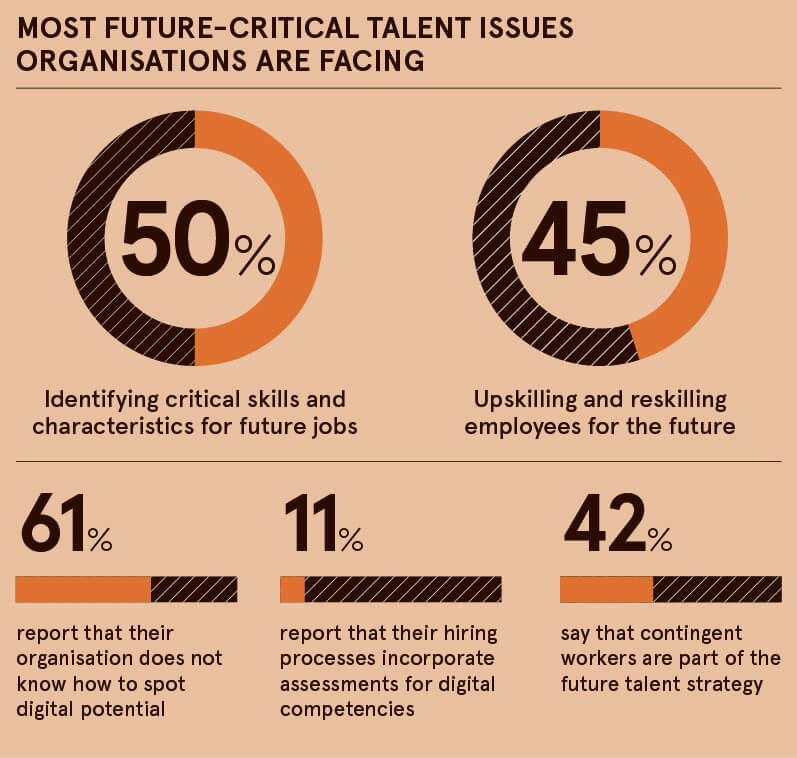Businesses are facing unprecedented change as customers demand more digitally enabled products and a user experience as attractive and seamless as they enjoy on their social media apps and streaming services. Entire industries are being disrupted and long-standing market leaders are being usurped by young upstarts.
All this is having an enormous impact on the talent landscape. Last year, the National Office for Statistics said 1.5 million workers in the UK are at risk of losing their jobs to automation and artificial intelligence (AI). Companies are under pressure to build a workforce that will be able to deal with future challenges that they can’t yet foresee.
This is a tremendously challenging undertaking, exacerbated by a digital skills gap that could cause the UK to miss out on as much as £141.5 billion in GDP growth up to 2028, Accenture says. If organisations can’t find the right talent in the job market, then it’s crucial they focus their attentions on upskilling and reskilling current employees. However, three out of five companies admit to not knowing how to spot digital potential, according to a digital readiness study by Aon’s Assessment Solutions.
To build a workforce for the future, human resources and recruitment departments need to understand which employees are able to learn and adapt to change
An accountant whose manual reporting is perhaps not needed now that the finance department is automating many of its processes, for example, could have the skills, mindset and behavioural competencies to become a successful data scientist, a role the company may be struggling to fill. Organisations that are able to identify employees who can make this kind of transition will be in the best position.
“To build a workforce for the future, human resources and recruitment departments need to understand which employees are able to learn and adapt to change,” says Andreas Lohff, chief executive at Aon’s Assessment Solutions. “Are they motivated to do that and engaged enough to grow with the company? Companies need employees who can learn and develop over time, no matter what is thrown at them. This also means reward systems, career policies and development systems need to be suitable to support that.”

Talent assessments are central to sourcing the flexible and agile talent required to lead companies forward in the digital age, yet only 11 per cent of organisations currently incorporate assessments for digital competencies, according to Aon’s research.
Aon’s Assessment Solutions leverages video technologies and AI algorithms to identify people with the right behaviours needed to adapt to future changes. The assessments are able to measure talent according to their learnability, agility and flexibility, and then provide vital data so companies can make smarter hiring decisions. Aon’s assessment tools, methods and platforms are up to date, technologically advanced, designed and enabled as mobile first, available 24/7 on the web, adaptable to client needs and attractive in terms of user experience for both candidates and HR professionals.
Blockchain is also set to play a more significant role in connecting companies with talent. Most individuals and organisations still rely on costly, self-reported and unverified methods to exchange data about previous employment, professional achievements and educational certifications. To counter this, Aon’s Assessment Solutions is driving the development of the Velocity Network, leveraging blockchain to build an “internet of careers”, a global network for verified and trusted career credentials in the digital age.
“The Velocity Network is a common language for all involved in hiring,” says Lohff. “Candidates can store all their relevant information in one place, including CV and assessment results. And as the data subject, they own that information and can entirely control who accesses it. They can provide access and take it away again. It puts the power back in their hands and ensures a process that is both secure and efficient.”
For more information please visit assessment.aon.com/digital-transformation

